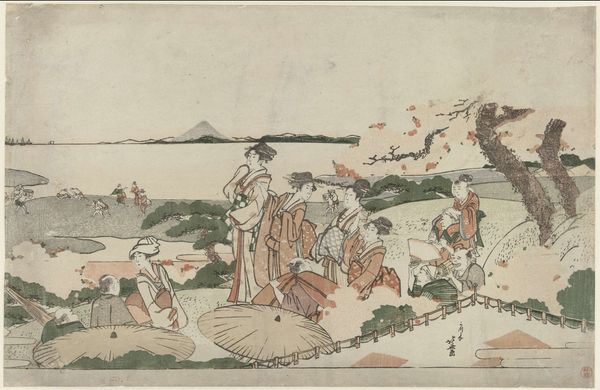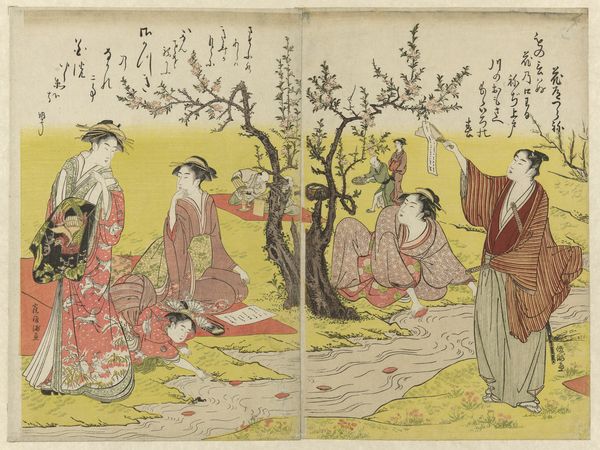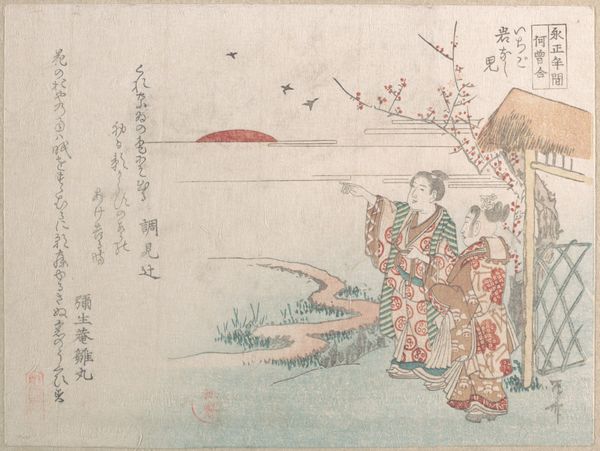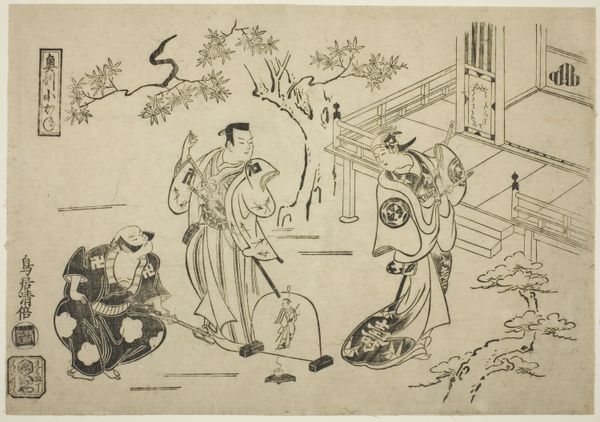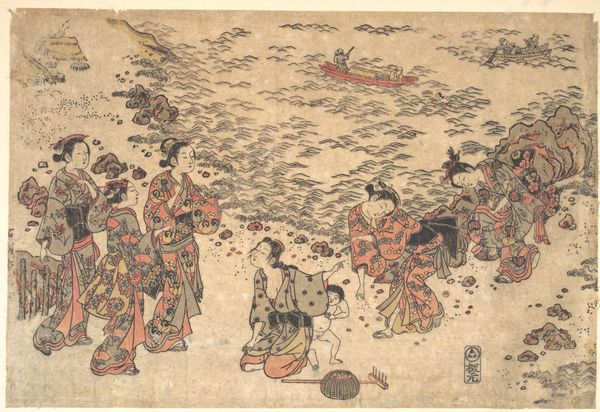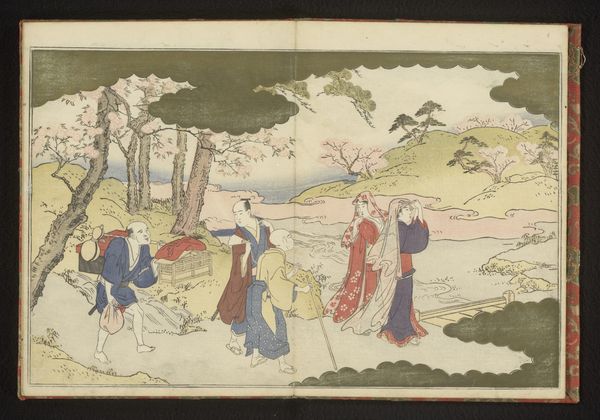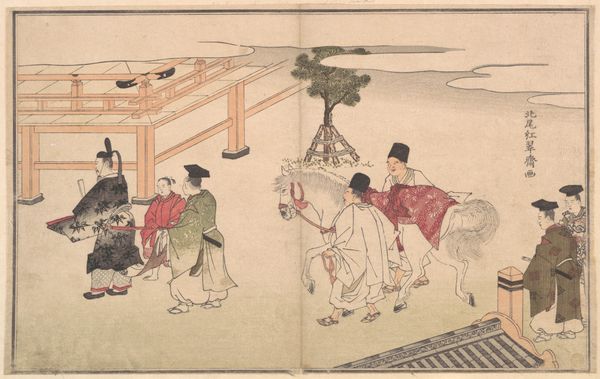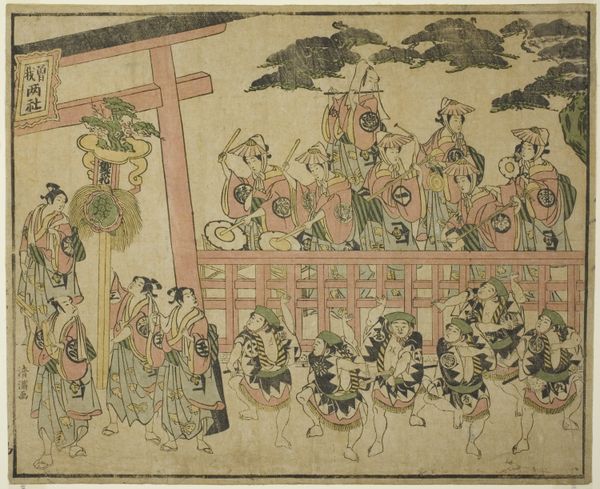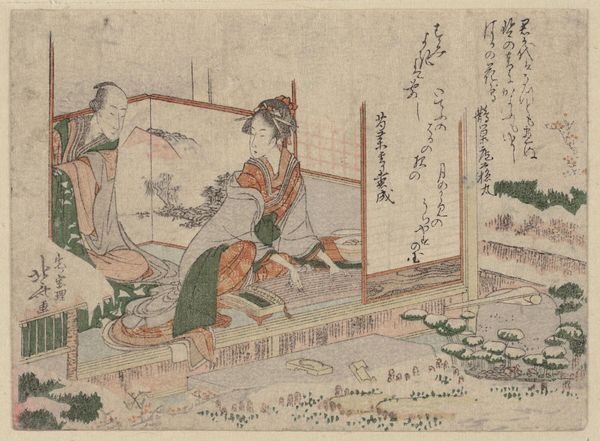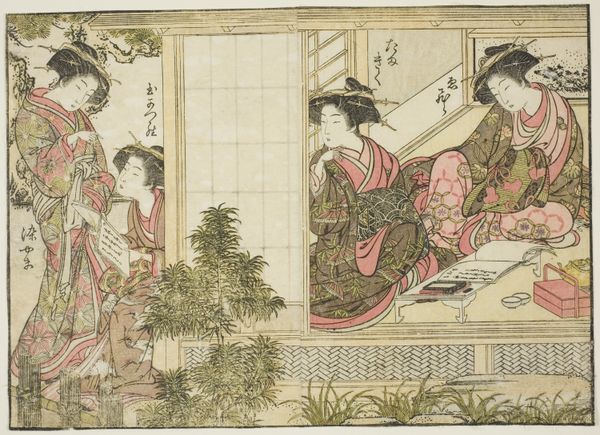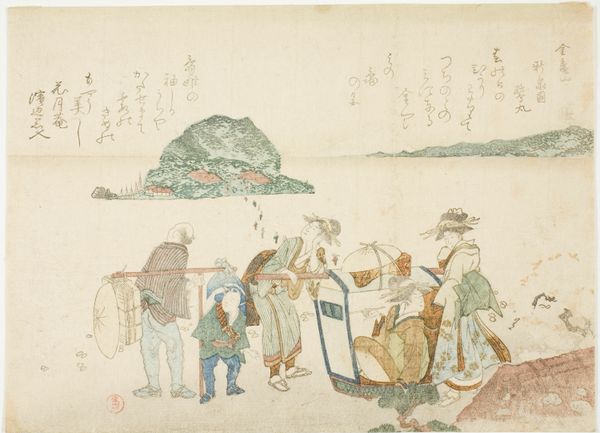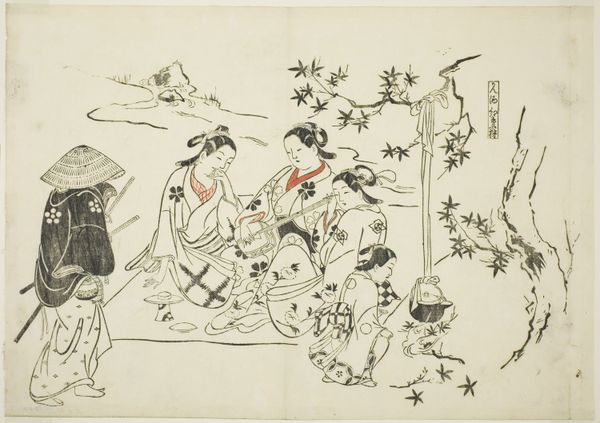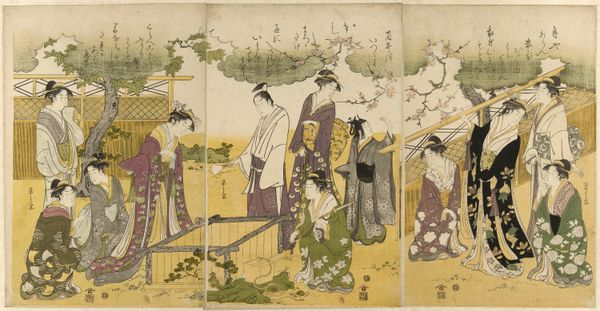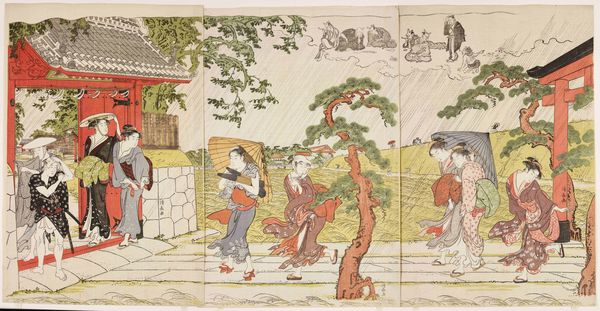
Flower Viewing 1711 (reprint of 17th century work)
0:00
0:00
#
ink drawing
#
pen drawing
# print
#
pen sketch
#
asian-art
#
japan
#
personal sketchbook
#
ink drawing experimentation
#
pen-ink sketch
#
pen work
#
sketchbook drawing
#
watercolour illustration
#
sketchbook art
Dimensions: 11 7/8 × 23 3/4 in.
Copyright: Public Domain
Curator: What a tranquil scene. This is "Flower Viewing" by Hishikawa Moronobu, though this print dates to 1711, it’s a reproduction of an earlier 17th-century work. Currently, it's held at the Art Institute of Chicago. Editor: It has a wonderfully relaxed and festive vibe. I notice the contrast in groups: one settled, almost in a private world, and the other a group arriving. The minimalist aesthetic gives it space to breathe. What strikes you most about it materially? Curator: I find myself drawn to the materiality of the woodblock print, itself. The layering of ink, the subtle variations in tone—it speaks to a whole workshop's worth of labour. The act of creating multiple impressions democratizes access to this image. Consider how this changes the consumption of art compared to singular painted works for wealthy patrons. Editor: Good point! Woodblock printing allowed images to circulate much more widely. Did that have an effect on artistic patronage and what kinds of scenes artists chose to depict? Were they painting for a broader public? Curator: Undoubtedly. Images such as these were no longer restricted to the upper echelons of society. The depiction of 'everyday life' gained prominence. It invites a more general public into viewing these sorts of leisurely gatherings and activities, influencing consumer culture even. Editor: So, these scenes of 'everyday life' weren't so 'everyday' for everyone, right? Were these idealized images part of a broader marketing scheme for experiences only the privileged could actually afford? Curator: Absolutely. While this piece depicts leisure, its dissemination underscores broader social and economic disparities. It creates aspirational consumer habits, shaping what's desirable, particularly for merchants, a rising class eager to emulate aristocratic culture. Editor: That's fascinating to think about. There is an enduring allure to such carefully crafted scenes, not just in their artistry but also in their reflection of—or aspiration to—a particular lifestyle. Curator: Agreed. Understanding the social and material context transforms how we understand the artwork. Editor: Definitely. It’s made me appreciate that while "Flower Viewing" might initially appear as a pleasant diversion, it is also revealing about a culture’s values and ambitions, particularly regarding labor. Thank you for that insight!
Comments
No comments
Be the first to comment and join the conversation on the ultimate creative platform.
